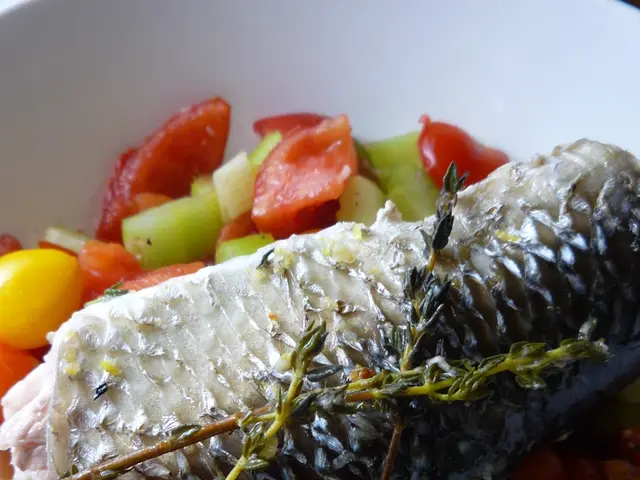Unveiling the Mysteries of Beer Brewing through Fermentation Processes
Gotta love brewer's yeast, Saccharomyces cerevisiae, the hero of our tale that's responsible for whipping up some tasty beverages, like beer and booze. These little fellas chow down on simple sugars to keep their survival engine revving, but when oxygen's around, they can crank out a ton of energy for an exponential population growth spurt. When oxygen's not available, though, we enter the mystical world of fermentation.
Simply put, in the realm of beer, fermentation kicks off when these yeasty basts gobble up sugars from wort, a sugar water concoction made from malted barley, and spit out ethanol, carbon dioxide, and a variety of flavor and aroma compounds to keep things interesting.
Why Fermentation Freakin' Rules
The fermentation process is indispensable in the creation of alcoholic beverages. Without it, we'd be left with just plain sugar water. In beer production, yeast fermentation is crucial to giving us ethanol and carbon dioxide, but it's those tasty secondary compounds that add complex layers to beer, like aroma, taste, and mouthfeel.
Scientists have found that yeast create over 500 flavor and aroma compounds during fermentation, and these compounds give certain beer styles their unique characteristics. These compounds can be grouped into some common categories: esters, fusel alcohols, phenols, aldehydes, diacetyl, and sulfur compounds.
Esters, the Ester Kings
Esters reign supreme when it comes to beer character, especially in ales. Esters are compounds made from an acid and an alcohol, and they account for the fruity aromas and flavors in beer.
ester production differs by yeast strain and fermentation conditions. Some common esters include ethyl acetate (solvent), ethyl caproate (apple), and isoamyl acetate (banana).
Fusel Alcohols, Beyond the Booze
Fusel, or higher alcohols like n-propanol, isoamyl alcohol, and isobutanol can taste similarly to ethanol, but they can add warming, hot, or solvent flavors and mouthfeel to beer. While these guys may not be the most welcome guests at high levels in any beer style, they can sneak in at low levels to add complexity to good-tasting brews. Different yeast strains produce varying amounts of fusel alcohols, with ale strains generally producing higher concentrations than lager strains.
Phenols, a Scentsational Journey
Phenolic compounds can come from ingredients and fermentation, but the phenolic compounds produced by yeast are described as spicy, clovey, and medicinal. In high concentrations, they can take on plastic, medicinal, Band-Aid, and smoky notes. In most beer styles, phenolic flavors are considered flaws, but they're a key component in some Belgian and wheat beers.
Acetaldehyde, a Precursor with Potential
Acetaldehyde is a compound that sometimes smells like green apple or fresh cut pumpkin. It's an intermediate compound that's formed and reused in a metabolic cycle. Most acetaldehyde is reused by yeast, but some may linger. A little acetaldehyde adds complexity to beer, but excessive levels are considered off-flavors.
Diacetyl, a Double-Edged Sword
Diacetyl can sometimes be found in classical beer styles at low levels, and some consumers enjoy its buttery or butterscotch-like aroma and flavor. However, many consider it a flaw when found in even low quantities, and it can add a slick or slippery mouthfeel to beer. Some yeast strains, particularly English ale strains, are heavy diacetyl producers.
Sulfur, a Malodorous Marvel
Sulfur compounds in beer smell like rotten eggs or, dare I say, like a fart. Yeast produce sulfur compounds during fermentation, but these compounds are volatile enough that strong fermentation activity drives them out along with CO2, greatly reducing sulfur by the time you start drinking the beer. In colder temperatures, sulfur compounds are less volatile and remain in solution more readily, leading to sulfurier beers.
Different Types of Fermentation
The primary types of beer fermentation are ale/top-fermenting, lager/bottom-fermenting, mixed/"wild" culture fermentation, and spontaneous fermentation.
Ale fermentations are often called top-fermenting because they require warmer fermentation temperatures, which promotes more active fermentation with high CO2 production, causing the yeast to float to the top. These warmer fermentation temperatures also lead to more flavorful beers due to increased activity and the production of more fruit-like esters.
On the flip side, lager fermentations are typically bottom-fermenting, featuring cooler temperatures that lead to slower fermentation activity, cleaner flavor and aroma profiles, and fewer metabolic byproducts.
Some alternative types are the mixed or wild culture and spontaneous fermentations, which include a wide variety of fermenting organisms, like non-Saccharomyces yeasts and bacteria, resulting in beers that are high in detectable acid compounds and have complex, sour, and funky characters.
The Three Stages of Fermentation
The first stage in fermentation is the Lag Phase, during which yeast are acclimating to the physical environment of wort. While fermentation is defined as an anaerobic process, oxygen is essential during this stage to provide ample building blocks for new cells. Here, yeast take in dissolved oxygen, minerals, and amino acids, but not glucose. There's not much visible activity during this stage, but it's crucial as yeast build healthy cells for fermentation.
The second stage is the Exponential Log or Growth Phase, which begins when all oxygen has been used, and yeast start consuming wort sugars, producing CO2 and showing signs of active fermentation. This is the stage of rapid growth and a high rate of yeast multiplication, with a quickening fermentation process.
The final stage is the Stationary Phase, during which the rate of yeast growth and carbohydrate assimilation slows. The majority of flavor and aroma compounds have been produced by this point, and yeast will now reabsorb compounds like acetaldehyde and diacetyl for cleanup, leading to beer maturation or conditioning.
How Long Does Beer Take to Ferment, Really?
The time for fermentation depends on factors like yeast strain genetics, starting gravity, and fermentation temperature. In general, most ales will ferment fully in about 7-10 days, but lagers, due to slower fermentations and the need for more conditioning, can take anywhere from 14-21 days.
The Seven Stages of Beer Brewing
The beer brewing process consists of the following seven stages: malting and milling, mashing, lautering, boiling, fermentation, conditioning, and packaging.
- Malting and Milling: In this process, barley (or other grains) are activated with enzymes to make them more readily used in the brewing process, creating easily crushable starches.
- Mashing: Today, mashing involves steeping milled malted barley (or other grains) in water at specific temperatures to activate the enzymes that break down complex starches into smaller carbohydrates, like glucose, for fermentation.
- Lautering: The liquid wort is separated from the solids (grains) using a process similar to using a colander.
- Boiling: Boiling halts enzyme activity, sterilizes the wort, allows hops to be added, and converts hop oils into iso-alpha acids, creating bitterness in the beer.
- Fermentation: Yeast is added to the wort, and they break down the fermentable sugars in the wort into ethanol, CO2, and flavor and aroma compounds, like esters and phenols.
- Conditioning: During conditioning, yeast cleanup any remaining compounds, adding complexity to the beer and maturing the beer's flavor profile. At this point, beer might naturally carbonate by trapping CO2 in the fermentation vessel.
- Packaging: Packaged beer uses airtight containers that can handle high levels of CO2 and are free of oxygen to ensure the beer is shelf-stable and doesn't undergo oxidation.
Final Fermentations
Fermentation is a critically important process in brewing, and though complex, understanding it will help you make better beer. For more information about yeast and fermentation, check out Yeast: The Practical Guide to Beer Fermentation by Chris White, or for a foolproof fermentation experience, consider our latest innovation, PurePitch Next Generation.
Neva Parker, our resident expert, earned a Bachelor's Degree in Biology from Gonzaga University and discovered her love for brewing while studying abroad in London. She joined White Labs in 2003 as a lab technician and now serves as Director of Operations. When she's not brewing up tasty beverages, she enjoys cooking, cocktails, and entertaining with her engineer husband, two kids, and world travels.
- In the realm of health-and-wellness and lifestyle, understanding fermentation processes, such as those in brewing, can provide insights into nutrition and healthy cooking, given the numerous flavor and aroma compounds generated.
- Recognizing the importance of data-and-cloud-computing and technology in the scientific field, one can appreciate how brewing optimizes fermentation through factors like temperature, strain genetics, and starting gravity, which are scrutinized and tracked in real-time.
- With the ever-growing popularity of food-and-drink offerings rooted in health and wellness, scholarly research on beer's fermentation constituents, like esters, phenols, and acetaldehyde, could potentially uncover new applications for these compounds in future culinary creations.
- Merging the disciplines of science and cooking, the knowledge of fermentation in beer production could inspire the development of unique food and beverage pairings, experimenting with various flavors and aromas to create memorable dining experiences.
- As technology advances and sustainability becomes a priority, there may be an opportunity to utilize yeasts in fermentation to process food waste, transforming it into biofuels or valuable nutrients for agriculture – a symbiotic system that resonates with brewing's circular ecosystem.








